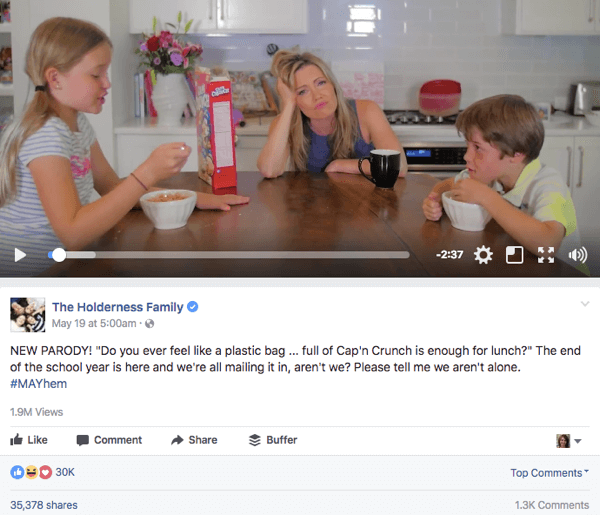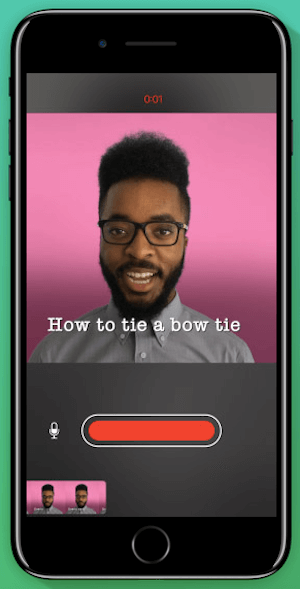Wondering how to increase your business’s reach on social media?
Have you considered partnering with an influencer?
To explore how to develop business relationships with influencers, I interview Neal Schaffer.
More About This Show
The Social Media Marketing podcast is an on-demand talk radio show from Social Media Examiner. It’s designed to help busy marketers and business owners discover what works with social media marketing.
In this episode, I interview Neal Schaffer, author of three social media books including Maximize Your Social. He teaches social media strategy at Rutgers University and is the founder of PDCA Social, an agency that specializes in helping Japanese businesses leverage American social media platforms.
Neal explores the difference between paid and earned influencers.
You’ll discover how to use influencer marketing to scale your social media results.

Influencer Marketing: How to Scale Your Social Media Exposure featuring insights from Neal Schaffer on the Social Media Marketing podcast.
Listen Now
Subscribe: iTunes | Android | Google Play | Stitcher | TuneIn | RSS
Here are some of the things you’ll discover in this show:
Influencer Marketing
Why Influencer Marketing?
Social media is a noisy place and the days of 100% organic success are over. Brands, companies, and practitioners need to use paid social to get noticed. In this environment, Neal believes other people can accelerate your social media marketing efforts. Put simply, you need to consider other users on social media who might be able to help spread the word about your brand and amplify your message.
Neal identifies three different types of “others”: your employees or partners (employee advocacy), your fans (brand advocacy), and influencers (also known as influencer marketing). Each type is powerful in its own way, and in 2017, influencer marketing is the most mainstream. It can help you cut through the noise in a different way than paid social. Plus, influencer marketing is ideally more authentic and leads to more engagement.
I ask Neal to explain what influencer marketing is, for people who are new to the concept. Neal says influencer marketing involves partnering with people who have influence over others. In the old days, newspaper writers and television broadcasters had tremendous influence. Now, in certain online or social media communities, people on YouTube or Instagram are famous and influential in a way that’s similar to big-name media celebrities.
Some social media influencers focus on one network, such as Instagram or YouTube, whereas others have appeal across several platforms. With influencer marketing, you work with an influencer who talks about your brand, and those mentions of your product or service have a positive effect on your business.
These days, social media celebrities like Zach King have as much influence as newspapers and broadcasters did in years past.
People become influencers on social media because they’re creating their own valuable content. They have a regular audience that cares about the influencer’s tips, recommendations, or other content.
However, unlike a true celebrity, a person doesn’t need a million followers or subscribers to be an influencer. They need to have relevance only in their community. For example, a YouTuber may have never heard of a podcasting influencer. That’s okay. The podcaster needs to have influence only within their specific podcasting community.
Listen to the show to hear more about how social influencers compare to big-name celebrities.
How to Discover and Evaluate Potential Influencers
To begin, use listening tools and do keyword searches to learn who in your industry is talking about topics or products relevant to your business. For instance, a consumer brand selling to moms needs to know which mommy bloggers are talking about products similar to theirs, or which Instagrammers are taking photos and using hashtags related to their products. A B2B company needs to seek out tech bloggers who carry a lot of weight.
Remember, influence isn’t only about the number of followers. Find people who are producing content that seems to have an effect. You can analyze influence in a lot of ways but as you begin, check whether someone’s content gets a lot of shares on social media. Also, consider whether someone’s content is a worthwhile resource for your own followers.

Look for personalities with a large following, and whose content is relevant to your customers’ lives and your product.
When you find an influencer who might be a good partner, begin engaging with that influencer organically. Start by introducing yourself and sharing their posts. Be sure to tag them so they know you find value in their content. Follow them and comment on their posts. Then, when you do reach out to discuss working together, you’ve established your interest in their content.
For example, Neal does influencer campaigns on behalf of clients and people reach out to him as an influencer. He uses Sprout Social to see the history of his conversations. When someone asks him to be part of a post or infographic, he’ll check whether they follow him or have shared his content before he responds to the request.
Take the extra step to engage and develop relationships organically. It will really help in your efforts with influencers in the long run. A lot of people attend industry events and conferences to try to discover the movers and shakers, meet them, and develop relationships that are mutually beneficial. Finding influencers follows a similar framework. You’re just doing it online.
Listen to the show to hear my process for seeking out influencers.
Partnering With Paid Versus Earned Influencers
When people think about influencer marketing, they immediately think, “Oh, I don’t have the budget to pay someone $10,000 to post a photo.” While it’s true that celebrities are paid a lot for endorsements, micro-influencers don’t command such high fees.
For example, you can pay $300 a tweet or $500 for an Instagram post; however, those relationships will be purely transactional. You might be one brand among 30 that the influencer works with, which runs the risk of turning off the influencer’s audience. Paid influencers will treat your business as they would any of their many customers.
I ask Neal how the FTC’s Endorsement Guides and its enforcement of transparency about paid sponsorships have affected influencer marketing.
FTC staff reminds influencers & brands to clearly disclose relationship: https://t.co/FhQlLLr5pY #influencersFTC pic.twitter.com/bx1Jei5XRl
— FTC (@FTC) April 19, 2017
Neal says the platforms where influencers share content are encouraging influencers to disclose sponsorships, too. Also, if someone has a large or loyal following, Neal doesn’t think disclosing a sponsorship or ad necessarily detracts from the endorsement. People still see the ad and the question is whether they act on it.
However, Neal suggests anyone who’s looking to pay someone $1,000 for a tweet should also consider the potential benefits of doing a promoted tweet campaign for $1,000 and then compare. View paid influence the same way you view paid media.
On the other hand, you can build relationships with influencers organically. The deeper a connection you have with someone, the easier it will be to ask them for their help and see how you can help them. Those relationships are the ones with the most long-term value.
Listen to the show to hear Neal emphasize the basics that help you organically build relationships with influencers.
Examples of Earned Influencers
Roundup blog posts are a popular way to engage with influencers and get some sort of ROI from an earned engagement.
To create a roundup blog post, find people who have a lot of followers in your industry and ask them to contribute a quote to a post. Then, if the influencers share the post with their community, you’re “leveraging the other.” For example, even if only half of the 20 people you invite actually tweet the post to their 50,000 followers, your post can reach a much larger audience than your own 2,000 Twitter followers.
As you curate content, you can ask influencers to come out to an event or join a Twitter chat. Bring them into your world. Instead of asking someone to post or tweet about your brand, give them natural opportunities to do so.
When relationship development is done right, it’s win-win. But it can seem forced. For instance, a custom dress shirt company reached out to Neal because he wears a suit in his profile pictures. They wrote, “We know you look good on social media. We want to offer you a free custom-tailored shirt.” The offer came out of nowhere and because there was never any follow-up, Neal never got that custom shirt.
To work well with influencers, set clear expectations and then stick to them. Don’t ask influencers for one thing and add them to email lists and expect them to participate on a weekly basis when that wasn’t part of the expectation.
Neal also stresses that to form a successful relationship with an influencer, you need to understand the relationship from the influencer’s point of view and communicate the value of your brand and the relationship to the influencer. Remember that influencers are normally content creators, and content creators are busy. They often have their own products and initiatives, and people and companies ping influencers frequently.
For example, when a tool company offers Neal a one-month free trial if he’ll post about them, that approach doesn’t work because Neal needs a tool he can use forever. If he can use the tool only for 30 days, he won’t waste his time writing about it. Moreover, when a company nickel-and-dimes an influencer, it implies that the influencer isn’t valuable to the company.

Influencers often have busy schedules with deadlines of their own. Be respectful of their time.
In a better scenario, a tool company offers Neal a lifetime membership. They don’t ask him to blog about the tool or the company, but if Neal loves the product, they know he’ll do it anyway. The smart brands know an influencer’s long-term value. You don’t need to pay a lot of money. You can offer your assets (products, services, or customer experiences) to the influencers.
As influencers with huge followings become more expensive, you can build relationships with micro-influencers, who have fewer followers than influencers (maybe 10,000 to 50,000 instead of 500,000), but still have pull in a niche market or community.
You can build a deeper relationship with micro-influencers because fewer brands are vying for their attention. Plus, if you work with a few micro-influencers, you could get a stronger effort than you would by working with one big celebrity. You may also have an opportunity to build a mutually beneficial relationship by helping the influencer grow while they help you.
Listen to the show to learn how someone went out of their way to earn my influence.
How to Reach Out to Influencers
Before you contact influencers, find who they are. Do a lot of Google, Twitter, and Instagram searches and create a list of the people you want to contact.
Next, prioritize. You can’t manage relationships with 1,000 different influencers. For the purpose of a campaign, aim for 5 to 20 people. Start with the people who might require a paid approach because they still may be interested. You never know when your product is going to tickle someone’s fancy.

Keep your influencer relationships manageable by keeping the pool to 5 or 20 people.
For example, Neal worked with a company whose product reduced certain illnesses in babies between the ages of six months and three years. He found that influencers who were more expensive might reduce their price because they really wanted to work with that brand.
After you contact 10 to 30 people, look at how you approached them and see who responded. You’ll get an idea for market price and expectations, and you can adapt based on that information. Through this, you’ll find your tribe of influencers. Look for situations where you both have a vision for the relationship and move forward with the ones where your budget and their expectations match.
There’s nothing wrong with doing 100% organic or 100% paid. However, if you’re doing 100% paid, you don’t have to offer a few thousand dollars to each blogger. You could send free product or a nominal amount. Show that you value the time they take to write a blog post or send a tweet, and offer a token of your appreciation.
I ask Neal how to broach the subject of an endorsement with an influencer. Neal reiterates that you should engage with potential influencers on social media before the initial contact. That might spark a conversation that can help you.

Engage with influencers on social media before you present them with an offer or ask.
When you do reach out, send an email or message that lets the influencer know you’ve been following each other on social media. Also, reference one of their articles that you loved and shared with your community and tell them that it resonated with your fans. Then, mention you’re trying to get the word out about your product. Ask if they work with companies, and if so, how.
You can also let an influencer know you’d love to send them one of your products to try and get their feedback. Or offer them something to use as a giveaway on their blog. Determine what you can give that would be valuable to them.
Once again, don’t specifically ask for a blog post or anything else. Just know that if they really like your product, they’ll probably talk about it naturally anyway. You can also look at businesses an influencer has worked with in the past to develop an idea of the influencer’s expectations.
Listen to the show to discover what Neal is doing as a result of working with influencers.
Discovery of the Week
Apple just released Clips, an iOS app for creating and editing square video, which tends to perform best on social media. Clips is ideal for creating short videos that you share in your social news feeds or as stories on Facebook or Instagram.
Clips is like a little iMovie editor stripped down for social media videos. You can record and edit video and add filters, posters, speech bubbles, and more. The app even lets you create a title slide or add content from your camera roll. To add music, choose from the included audio clips or select one of your own.
The Live Titles feature is an easy way to add closed captioning. This is helpful because, on social platforms, video is typically muted until the captions draw viewers in. After you turn on Live Titles, the app translates your voice to text and the words pop up on the bottom of the screen. The text-to-speech functionality is pretty accurate, but you can edit the text if needed.

Add captions to your videos through the Live Titles feature on the Clips app.
The Clips app is free and available only to iOS users. Facebook, Twitter, and Instagram allow you to upload video in a square format, and Clips is a cool way to create these videos with little effort. The app combines the camera and effects into one easy tool.
Key takeaways mentioned in this episode:
- Learn more about Neal on his website.
- Follow @NealSchaffer on Twitter and Instagram.
- Connect with Neal on Facebook.
- Read Maximize Your Social.
- Learn more about Sprout Social.
- Review the FTC Endorsement Guides.
- Check out Clips.
- Watch our weekly Social Media Marketing Talk Show on Fridays at 10 AM Pacific on Crowdcast, or tune in on Facebook Live.
- Learn more about Social Media Marketing Society.
- Download the 2017 Social Media Marketing Industry Report.
–
This article first appeared in www.socialmediaexaminer.com
Seeking to build and grow your brand using the force of consumer insight, strategic foresight, creative disruption and technology prowess? Talk to us at +9714 3867728 or mail: info@groupisd.com or visit www.groupisd.com



